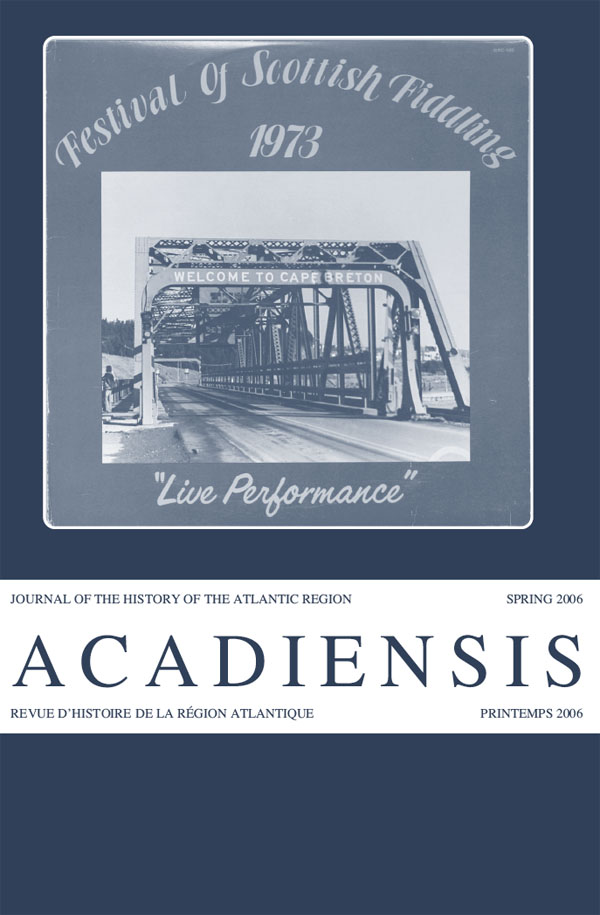Résumé
This article examines the role of immigration in New Brunswick's public policy between 1945 and 1971. While the New Brunswick government put considerable energy and money into attracting immigrants between 1867 and 1930, these efforts ceased during the Depression and have only recently been revived. Concerned with high levels of out-migration and unemployment, politicians and economic planners under three premiers in the post-war period (John McNair, Hugh John Flemming and Louis J. Robichaud) promoted a "New Brunswick first" policy, arguing that incentives for immigrants would give them benefits that native-born citizens did not enjoy. This approach contrasts sharply with immigration policy in other have-not provinces such as Manitoba, where concerns were being raised that federal immigration policy was ineffective in addressing regional needs. As this article suggests, research on provincial immigration programmes offers valuable insights not only on the regional dimensions of Canada's immigration policy but also on regional political cultures. Resumé Cet article examine le rôle de l'immigration dans les politiques publiques du Nouveau-Brunswick entre 1945 et 1971. Si le gouvernement du Nouveau-Brunswick consacra des efforts et des fonds considérables pour attirer des immigrants entre 1867 et 1930, ces efforts cessèrent lors de la crise économique des années 1930 pour ne reprendre que récemment. Préoccupés par les taux élevés d'émigration et de chômage, les politiciens et les planificateurs économiques sous trois premiers ministres provinciaux de l'après-guerre (John McNair, Hugh John Flemming et Louis J. Robichaud) firent la promotion d'une politique du « Nouveau-Brunswick d'abord », alléguant que les mesures incitatives à l'intention des immigrants procureraient à ceux-ci des avantages dont les citoyens de naissance ne jouissaient pas. Cette approche contrastait fortement avec la politique d'immigration d'autres provinces démunies telles que le Manitoba, où la politique fédérale d'immigration soulevait des inquiétudes selon lesquelles elle était impuissante à répondre aux besoins de la région. Comme le suggère cet article, les recherches sur les programmes provinciaux d'immigration fournissent de précieuses indications non seulement sur les dimensions régionales de la politique d'immigration du Canada, mais également sur les cultures politiques régionales.Copyright for articles published in this journal is retained by the author(s), with Acadiensis being granted a non-exclusive licence to each and every right in the work throughout the world. After publication of the work, the author(s) shall have the right to self-archive the work and to reprint the work in whole or in part in books authored by or edited by the author(s) without the payment of any fee. In these other formats, however, the author or authors are required to acknowledge the original publication of the work in the pages of the journal. In the case of any requests to reprint the work, Acadiensis will require a standard permission fee -- to be divided equally between the journal and the author. In the event that such requests are received by the author(s), the author(s) shall direct such requests to the journal.

